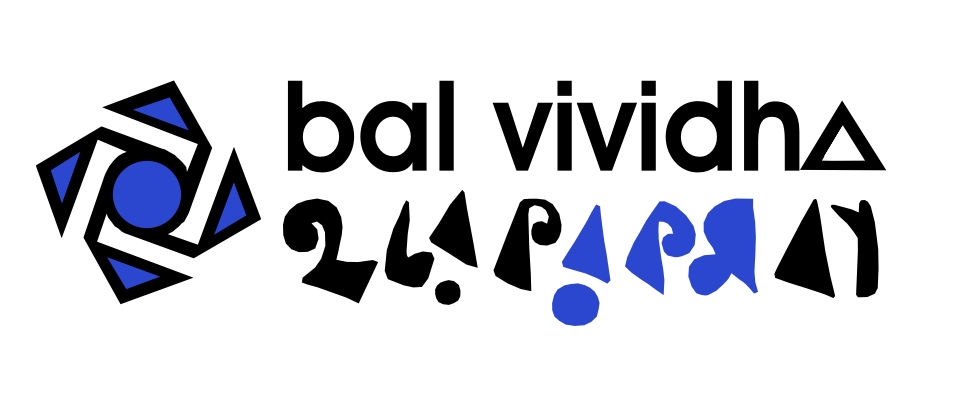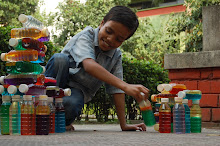Birla Industrial & Technological Museum -
Communicating Science for half a Century
Dr. Jayanta Sthanapati, Director
History of the Building
The premises of BITM, now 19A, Gurusaday Road was known as 18, Ballygunge Store Road before 1919. Record shows that one Mr. Mirza Abdul Karim sold it to the Tagores in 1898 and G. D. Birla had bought the property from Surendranath Tagore in 1919. After the Birlas took over the property, the house used by the Tagores was pulled down and the building that we see today was constructed. Luminaries like Mahatma Gandhi, Motilal Nehru, Lala Lajpat Rai, Pandit Madan Mohan Malaviya frequented this house.
After independence, National Education Policy of India has always encouraged popularization of science for economic growth and social upliftment. About 50 years ago, Dr. B. C. Roy, the then Chief Minster of West Bengal, foresaw a big role of Museum of Science, Technology and Industry in a developing country. This idea also matched with that of Industrialist G.D. Birla and in 1956 a part of the magnanimous Birla Park in Kolkata was handed over by him to Pandit Jawaharlal Nehru, the then Prime Minister of India, for setting up Birla Industrial & Technological Museum. It was the first organized science museum in India and was opened to the public on 2nd May 1959.
Its aim and Objectives
Its primary aims and objectives are (i) to portray sequential development of science and technology to its visitors, (ii) to create scientific awareness among the common people, and (iii) to help students develop a scientific outlook and democratic spirit, which were essential for the working of the constitution of India.
History of BITM
Backtracking down the memory lane, we find that BITM was opened with galleries on Electricity, Petroleum, Nuclear Physics and Metallurgy of Iron, Steel & Copper. Then one by one, Motive Power (1962), Communication (1963), Mining (1964), Popular Science (1965), Electronics & TV (1966) galleries were added. After a gap of about seven years, a new gallery on Transport was opened in 1973. From the very inception, Popular Lectures and Film Shows got underway. Science Demonstration Lectures for students became a feature of BITM from 1965. The same year also saw the pioneering effort of BITM - the Mobile Science Exhibition (MSE). The first exhibition on wheels through MSE was 'Our Familiar Electricity'. The very next year Students Science Seminar was organized at BITM. The concept of Model Making Competition, popularly known as Science Fair can be traced back to 1967. Gaining strong foothold in the city, BITM thought of going to the rural Bengal to spread the message of science. In 1968, the first satellite unit of BITM, a small science centre, at Purulia was opened. BITM also played a significant role in setting up Visvesvaraya Industrial & Technological Museum in Bangalore in 1965. Both BITM and VITM were then functioning under the control of Council of Scientific and Industrial Research.
As time went by, BITM added not only new galleries, but also new educational activities every year. It showed to the world how a science museum could be set up by indigenous effort and run successfully. In 1978, the National Council of Science Museums (NCSM), the parent body of all Science Museums/Centers in India, including BITM, was created. The NCSM started functioning from the premises of BITM.
Satellite Units of BITM
During the third and fourth decade of its existence, i.e., between 1978 and 1997, BITM gave tremendous support to NCSM for setting up seven science centres, which are now functioning as satellite units of BITM. They are Shrikrishna Science Centre Patna (1978), District Science Centre Purulia (1982), Regional Science Centre Bhubaneswar (1989), Science Centre Burdwan (1994), Dhenkanal Science Centre and Kapilas Science Park (1995), North Bengal Science Centre (1997) and Digha Science Centre (1997). Mock-up Coal Mine in BITM was inaugurated in 1983.
Towards the 50th Anniversary Year of BITM
Out of 12 permanent galleries in 2004, only 3 galleries, namely, Life Science, Biotechnology and Motive Power (II) were set up in recent years, but remaining 9 galleries were 16 to 42 years old. The presentations of those galleries were old fashioned and information on the subjects was not updated for the past few decades. We set a target to renovate all the galleries of BITM, one or more every year, so that by 2009 during the Golden Jubilee celebration of the museum, we would be able to present a new BITM to the society. We opened a gallery on 'Metals' in May 2005 and, thereafter, a 3D Vision Theatre and Fascinating Physics 2006. Motive Power (I) in 2006, Television in 2007. Transport and Coal Mine in 2008 was completely overhauled and were thrown open with new features. Galleries on Popular Science, Communication & IT and Mathematics are in the pipeline.
Innovative programmes
For attracting more visitors to BITM, special initiative to offer value added (existing) educational programmes and also new activites for the students and general visitors were thought of and implemented. Example may be cited of :-
Exhibition on 'Aviation and Space'
An exhibition on 'Aviation and Space' was conceptualized and organized from 2004 onwards in collaboration with Aeronautical Society of India, Kolkata Branch with an aim to create awareness among the common mass about the different aspect of this vibrant technology and its application. Scaled down models of Jet Engine, Satellites, models of some latest Aircrafts, Remote Controlled Helicopter, Pilot Ejection Seats, Black Box, Aircraft Control Panel, Runway, Aircraft Operations, missiles and host of other equipments related to aviation are exhibited. Thousands visit the exhibition every year.
Programmes for special target groups
There are numerous schools in Kolkata that deals with physically and visually challenged students. Initiative was taken for the first time to bring them under the fold of museum activities and they readily responded with enthusiasm and eagerness. Various NGOs extended their support to organize their visit and participation in various programmes. Each year numerous events are organized for thousands of underprivileged and challenged students, who participate with a lot of enthusiasm.
Bal vivida
Bal vividha, an education fair for children and adults got rolling at BITM in collaboration with Comet Media Foundation from 2006 with a string of innovative events. This programme is also a tremendous success if one goes by the amount of footfall it receives.
Organising Innovation Hub in INFOCOM
INFOCOM is an international business exhibition and conference organized by Business World, India's leading business magazine, for the last six years. The Innovation Hub at INFOCOM is a unique platform for bright, young students with innovation on their minds and passion to execute it. In collaboration with the Telegraph, The Innovation Hub at INFOCOM offers space for new, innovative projects which are exhibited before a gathering of the luminaries from the corporate world. The Science and Engineering students from all over India, who have talent to make a mark, are short listed and are given a chance to bring recognition to themselves as well as to their institute.
With all the above efforts and many more, we are inching towards our cherished goal, i.e., making BITM a Science Museum for everyone but with a difference by 2009.
Sunday, August 23, 2009
Subscribe to:
Post Comments (Atom)



Very nice post. Thanks for sharing. The Birlas are one of the biggest names associated with the industrial development in India. They are the pioneers in the field of Science and technology in the country. The Birla group has taken this initiative in Kolkata and had established a museum to display their achievements and offer opportunity for the younger generation to learn the basic concepts of science. Explore more about Birla Museum Kolkata.
ReplyDelete